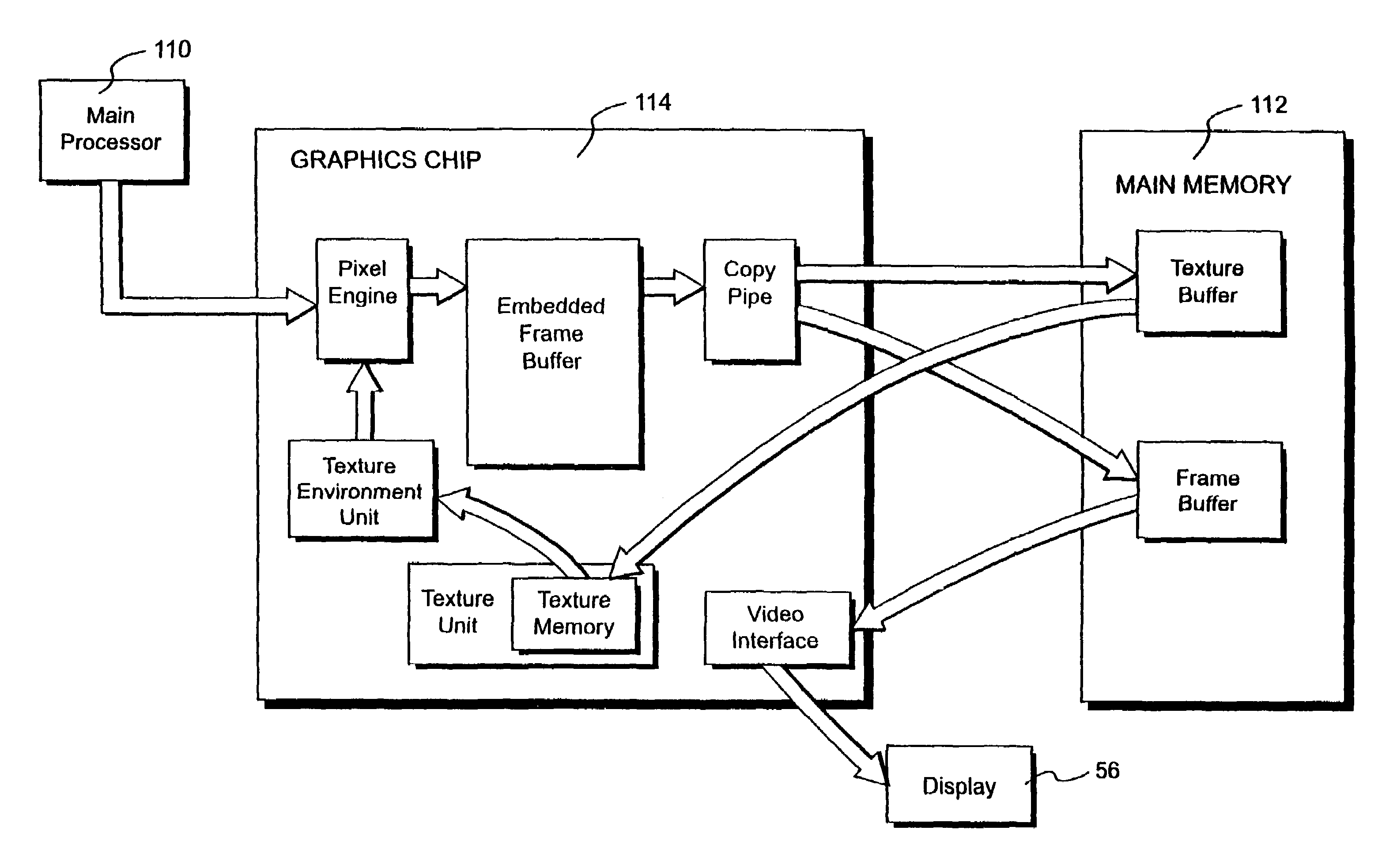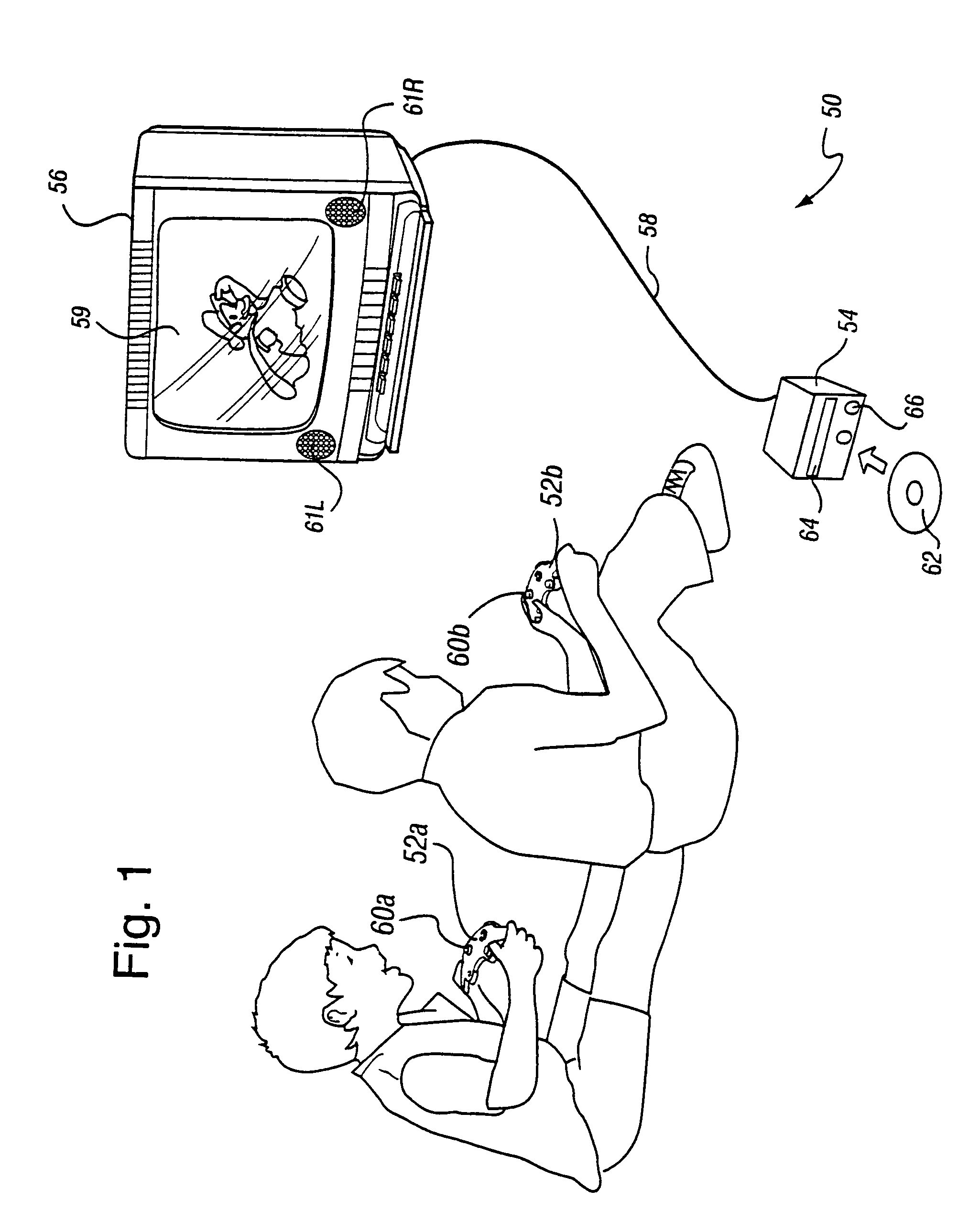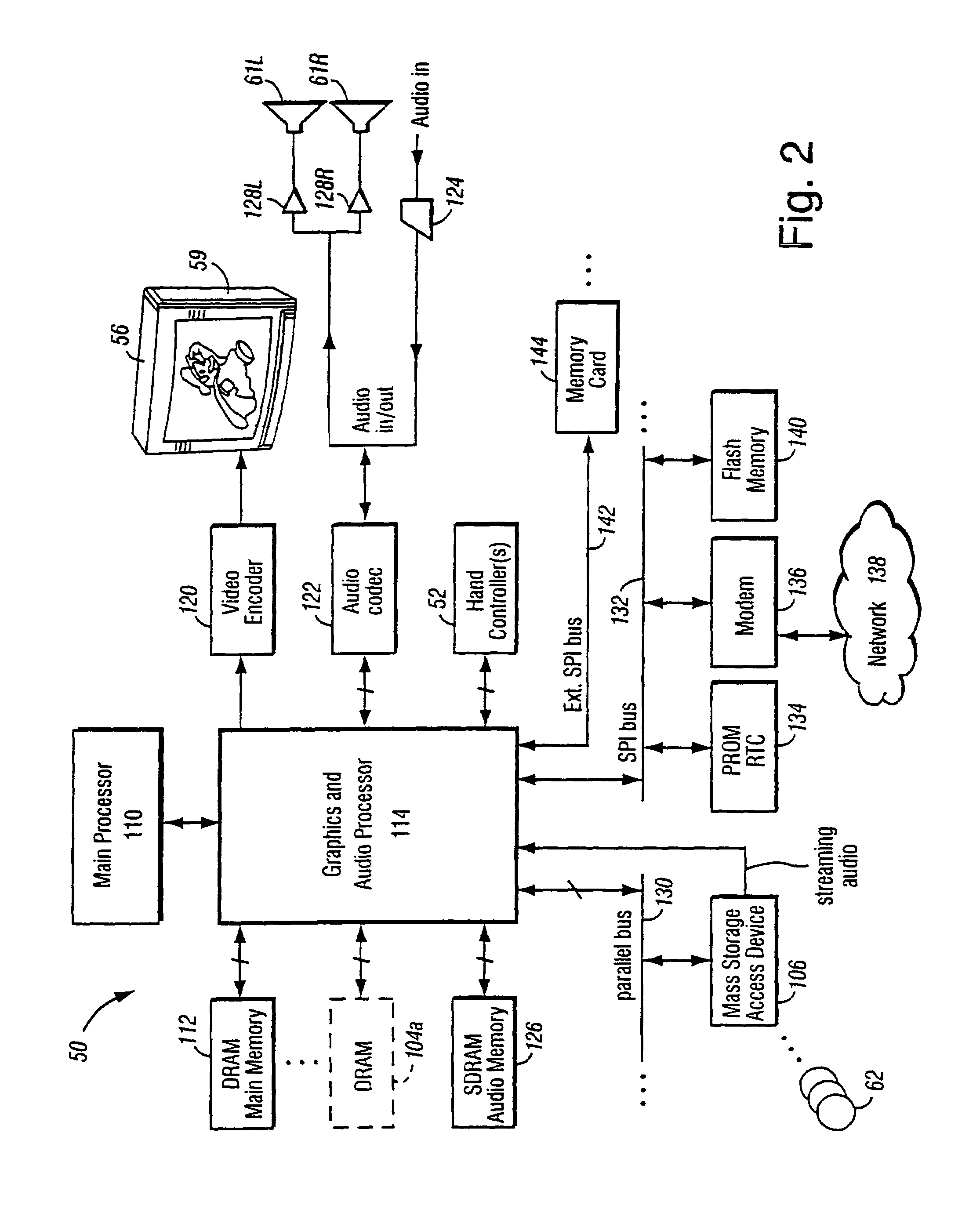Graphics system with copy out conversions between embedded frame buffer and main memory
a graphics system and main memory technology, applied in the field of interactive graphics systems, can solve the problems of complex computer graphics generation, limited computer-generated three-dimensional graphics just a few years ago, and most of us can't actually interact with the computer doing the graphics generation, so as to reduce the amount of memory needed, increase the flexibility of the system, and reduce the effect of memory consumption
- Summary
- Abstract
- Description
- Claims
- Application Information
AI Technical Summary
Benefits of technology
Problems solved by technology
Method used
Image
Examples
example graphics
Pipeline
[0090]FIG. 4 shows a more detailed view of an example 3D graphics processor 154. 3D graphics processor 154 includes, among other things, a command processor 200 and a 3D graphics pipeline 180. Main processor 110 communicates streams of data (e.g., graphics command streams and display lists) to command processor 200. Main processor 110 has a two-level cache 115 to minimize memory latency, and also has a write-gathering buffer 111 for uncached data streams targeted for the graphics and audio processor 114. The write-gathering buffer 111 collects partial cache lines into full cache lines and sends the data out to the graphics and audio processor 114 one cache line at a time for maximum bus usage.
[0091]Command processor 200 receives display commands from main processor 110 and parses them—obtaining any additional data necessary to process them from shared memory 112. The command processor 200 provides a stream of vertex commands to graphics pipeline 180 for 2D and / or 3D processi...
example conversion
Operations Usable During Copy Out
[0162]RGB to YCrCb(4:4:4) Conversion
[0163]This conversion is used to reduce the amount of external frame-buffer needed by ⅓. The following equations are used for the conversion:
Y=0.257 R+0.504 G+0.098 B+16
Cb=−0.148 R−0.291 G+0.439 B+128
Cr=0.439 R−0.368 G−0.071 B+128
[0164]Four pixels in a scan-line are converted in one cycle.
[0165]YCrCb(4:4:4) to YCrCb(4:2:2)
[0166]An illustration of the YUV444 to YUV422 conversion is shown in FIG. 13. The following equations are used for this conversion:
c′(0,0)=¼*c(0,0)+½*c(0,0)++¼*c(1,0)
c′(2,0)=¼*c(1,0)+½*c(2,0)+¼*c(3,0)
c′(4,0)=¼*c(3,0)+½*c(4,0)+¼*c(5,0)
c′(m,n)=¼*c(m−1,n)+½*c(m,n)+¼*c(m+1,n)
[0167]YCrCb(4:2:0) to YCrCb(4:4:4)
[0168]This conversion is done in two parts, as illustrated in FIGS. 14a and 14b. The first part, shown in FIG. 14a, converts from YUV420 format to YUV422 format. This conversion uses the following equations:
c′(0,0)=¾*c(0,0.5)+¼*c(0,0.5)
c′(2,0)=¾*c(2,0.5)+¼*c(2,0.5)
c′(4,0)=¾*c(4,0.5)+¼*c(4,0.5)
c′(0...
example copy
Out Commands
[0173]The EFB source and destination of the display copy operation is specified using an exemplary API function as follows:
[0174]GXCopyFBToDisplay
Argument:
[0175]
u16SrcLeft / / Upper-Left coordinate of the source rectangleu16SrcTopu16SrcWidth / / Width, in pixels, of the source rectangleu16SrcHeight / / Height, in pixels, of the source rectangleVoid*DstBase / / Address of destination buffer in memoryu16DstStride / / Stride, in multiple of 32B, of destination bufferGXBoolClear / / enable clearing color and Z frame buffers
[0176]This function copies the contents of the embedded frame buffer (EFB) to the display buffer 113 in main memory. By the term “copy out” we don't mean simply a transfer of all the information; rather, we mean that the contents of the embedded frame buffer are read out, further processed (e.g., filtered, resampled, scaled, etc.) and that the resulting data is then sent elsewhere (e.g., to an external point sample type frame buffer). The origin of the rectangle is defined ...
PUM
 Login to View More
Login to View More Abstract
Description
Claims
Application Information
 Login to View More
Login to View More - R&D
- Intellectual Property
- Life Sciences
- Materials
- Tech Scout
- Unparalleled Data Quality
- Higher Quality Content
- 60% Fewer Hallucinations
Browse by: Latest US Patents, China's latest patents, Technical Efficacy Thesaurus, Application Domain, Technology Topic, Popular Technical Reports.
© 2025 PatSnap. All rights reserved.Legal|Privacy policy|Modern Slavery Act Transparency Statement|Sitemap|About US| Contact US: help@patsnap.com



